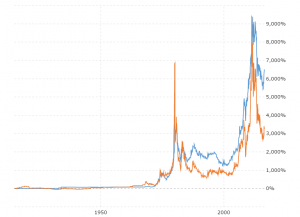What Is Bitcoin?
Bitcoin is unlike the traditional fiat currency system that we use today where all money is created and controlled by central banks such as the Fed or the European Central Bank (ECB). With Bitcoin, there is no central authority and as such is referred to as a “decentralized” peer-to-peer payment network. Broken down simply, you can think of Bitcoin as cash for the Internet.
Who Controls Bitcoin?
Throughout history, all money has been backed by one of two things; something of real value like gold or silver, or a centralized government to control it. With Bitcoin, the Internet has created a third way to back/secure a transaction. Instead of a bank or government to rule over Bitcoin, the power rests in the collective community of Bitcoin users and that is where Bitcoin is so revolutionary.
Nobody owns the Bitcoin network. Just like nobody owns the technology behind text messaging. Bitcoin is software with checks and balances that is controlled by the collective community of Bitcoin users that are connected to the network at any given time. There is, however, a small group of developers that constantly work to improve the open source bitcoin software. But users are allowed to use whatever software and version they would like, so the developers cannot force a change in the bitcoin protocol – it would need to be adopted by all users so that they all comply with the same rules.
How Does Bitcoin Work?
From the perspective of the user, Bitcoin is simple – it’s simply an app or a website which provides you with an online wallet (similar to a bank account) that allows you to send or receive bitcoins to or from that wallet.
But behind the scenes is where Bitcoin’s innovation comes into play. At the heart of the Bitcoin protocol is a public ledger called the “block chain.” This public ledger is a record of every bitcoin transaction that has ever occurred – all the way back to the very first bitcoin. Every time a transaction occurs, it is recorded in the PUBLIC ledger and its validity is assessed via the bitcoin software that every user is connected to. Each transaction is protected via digital signatures that correspond to the sender’s bitcoin “address” which allows users to have control over sending bitcoins from their own Bitcoin wallet (address).
In order for Bitcoin transactions to be verified, the Bitcoin protocol needs users to login to the network to verify transactions. This is accomplished via complex cryptographic math problems that require the users computing power. For lending your computer power, you are given a reward of bitcoins as a wage for your service. This is a process called “mining” and it is how bitcoins are created.
To break it down simply, if I want to spend 10 bitcoins on something, the public ledger will show that I have 10 bitcoins in my wallet. I can’t spend 11 because the ledger is visible to every user and it clearly shows that I only have 10. When I go to spend my 10 bitcoins, I send them from my wallet to the merchant. The digital signature is confirmed via complex math algorithms by users on the bitcoin network that this is in fact me, and that I have 10 bitcoins to send. Users connected to the network confirm the transaction by lending their computing power. My 10 bitcoins get sent, and the users that helped confirm my transaction are rewarded newly minted bitcoins.
Next week, will explain Bitcoin mining in depth. In the mean time, check out this infographic:


















I don’t understand